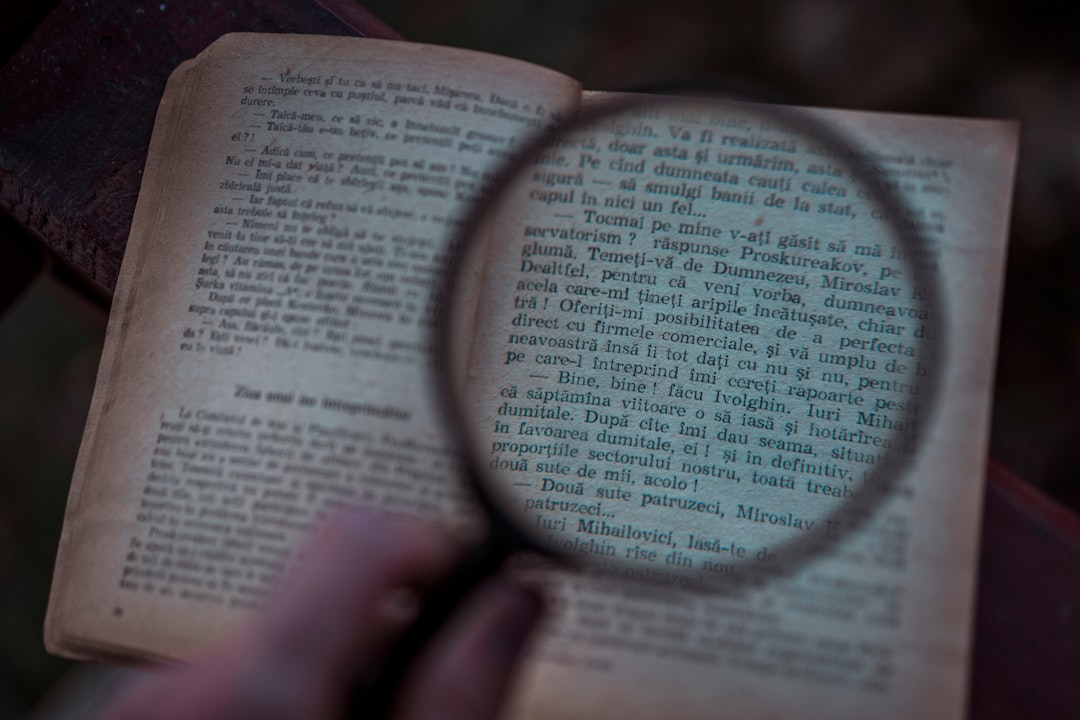A perfectly fine date turns on a dime: a laugh too loud, a fork held oddly, a casual brag, and suddenly your stomach says no. That snap of revulsion has a catchy name – “the ick” – but behind the meme is a serious puzzle for psychology. Why does attraction evaporate so quickly, and why do tiny cues loom so large in the moment? Scientists are tracing the feeling to ancient defenses, sensory shortcuts, and fast-but-fallible threat detection systems. Understanding it doesn’t just decode awkward goodbyes; it reveals how our brains trade risk for reward in the most intimate decisions.
The Hidden Clues

That jolt you feel isn’t random; it’s your attention grabbing a clue and amplifying it like a siren. A smudge on a glass, a whiff that feels off, or a dismissive shrug toward a server can flood the mind with meaning, even if the person across the table hasn’t changed. I remember a friend who swore her date was perfect until he tossed trash toward a bin and missed, then kept walking – the moment bloomed into certainty that something fundamental didn’t fit. The brain loves patterns, and when one small signal appears to confirm a fear – carelessness, poor hygiene, unkindness – it can reframe everything that came before.
This is a classic case of negativity outweighing positivity, a bias that prioritizes potential harm over potential reward. In survival terms, the cost of ignoring a warning often exceeded the cost of skipping a potentially good partner, so the red flag wins the internal vote. That functional logic can feel ruthless in modern dating, where minor quirks – perfectly harmless in most contexts – can be misread as major risks. The ick, then, is less about triviality and more about how small clues expand under pressure.
From Ancient Tools to Modern Science

Long before we had dating apps, our ancestors had to make swift judgments with sparse information. Quick aversion was one such tool, steering us away from disease, danger, and unreliable allies, often before conscious reasoning could catch up. Today, researchers use neuroimaging, behavioral tasks, and longitudinal studies to map how those ancient shortcuts play out in modern relationships. They’re finding that rapid evaluations are not only common; they can be surprisingly sticky, shaping memory and expectation after a single awkward cue.
In lab settings, people form durable impressions from fleeting details, and those impressions bias later choices in ways participants don’t always notice. What feels like a sudden vibe shift may be the visible crest of a hidden wave – an interplay of past experiences, cultural norms, and hardwired defenses. The science doesn’t excuse snap judgments, but it explains how they can feel so undeniable, even when logic protests.
The Behavioral Immune System

Disgust isn’t just about spoiled food; it’s a bodyguard for the social self. Psychologists describe a “behavioral immune system” that spots potential contamination and nudges us to avoid it – sometimes through powerful revulsion. Cues as small as dampness, odors, or visible residue can trigger protective distancing, even when real risk is minimal. In dating, that same system can generalize from pathogens to partners, conflating odd or unfamiliar cues with potential danger.
This overshoot is by design: better to flinch too often than too late. The trouble is that a heuristic tuned for survival doesn’t always play fair in a restaurant or living room, where a coffee stain is not a health threat and a quirky habit is not a moral flaw. When the behavioral immune system shadows romance, the ick feels like common sense, but it may simply be an alarm calibrated to a harsher world.
Scent, Sound, and the Subconscious

Smell is a quiet architect of attraction, shaping comfort and compatibility in ways we rarely articulate. Research on body odor and immune gene diversity hints that scent can signal underlying biological compatibility, so when a smell clashes, the mismatch can feel elemental. Sound works similarly: pace of speech, laugh timbre, and vocal warmth can signal mood, health, and dominance, all parsed in milliseconds. Even small mouth noises or chewing rhythms can collide with sensitive auditory systems, especially in people prone to misophonia.
These sensory systems don’t ask for permission from conscious thought; they take a vote and deliver a verdict. That verdict can be blunted or sharpened by context – stress, lighting, alcohol, and fatigue all tilt perception. When several faint mismatches stack at once, the tipping point arrives, and suddenly everything about the person seems wrong. The ick often starts in the senses and only later picks up a story.
Global Perspectives

The label is new, but the phenomenon is global, shaped by culture, climate, and norms about closeness. In places where communal dining, shared space, or family introductions come early, people may calibrate differently to touch, voice volume, or table manners. Hygiene expectations also vary, and what reads as casual or charming in one city can register as careless in another. Pathogen history plays a role too; communities with harsher disease burdens often show stricter norms around cleanliness and contact.
Gender and life stage influence the terrain, with many studies reporting that women, on average, score higher on pathogen-related disgust sensitivity. Urban density, social media, and dating apps add more noise, exaggerating tiny signals into trends. Across contexts, the throughline remains: aversion is a protective reflex that culture tunes, not a purely private quirk. The ick echoes local rules for safety, status, and the body.
Why It Matters

This isn’t just gossip about awkward dates; it affects well-being, fairness, and how we form families. If we mistake protective alarms for deep incompatibility, we may miss good partners or cycle through avoidable breakups. On the other hand, dulling our alarms can expose us to harm, whether health risks, manipulation, or slow-burning disrespect. The challenge is separating core dealbreakers – values, reliability, empathy – from superficial friction like nonstandard cutlery grips or eccentric shoes.
Traditional advice framed chemistry as an effortless spark, but the science reframes it as a negotiation between sensation and interpretation. Tools that help people label what they feel – journals, therapy, or even simple checklists – can reduce false positives without silencing self-protection. This matters for public health too, because disgust and avoidance influence everything from STI prevention to handwashing. The ick is a small doorway into big questions about trust, risk, and care.
The Future Landscape

Wearables and digital phenotyping are inching toward real-time maps of arousal and stress, promising to reveal the physiological footprints of aversion. In principle, subtle shifts in heart rate, skin conductance, or breathing could show when a date turns from curiosity to recoil, long before words do. Voice analytics and scent research are also advancing, teasing apart which acoustic or chemical cues quietly steer attraction. Combined with AI, these tools could personalize coaching – suggesting when to slow down, when to reappraise, or when to take the hint and leave kindly.
There are serious risks: privacy, bias, and the temptation to outsource intimate decisions to algorithms. Over-filtering by ick-susceptible cues could build narrower social bubbles, commonalities without challenge, and inequities masquerading as instincts. The better future isn’t a dashboard scoring chemistry; it’s technology that respects context and supports reflection. The frontier question is not whether we can measure the ick, but whether we should – and under what rules.
Call to Action

Pay attention to the signal, then name its source: health concern, value clash, sensory mismatch, or mood. If safety is in doubt, trust the aversion and step away; if it’s a minor habit, pause and reappraise after a good night’s sleep. Distinguish fixable friction – timing, nerves, etiquette – from nonnegotiables like cruelty or dishonesty. Communicate your boundaries briefly and respectfully, avoiding shaming language that turns a private reaction into a public wound.
Support better science: enroll in anonymized studies, donate to open research, and advocate for strict privacy standards around biosensing tech. If recurring icks create isolation, consider a therapist who understands sensory processing, anxiety, and attachment. Small changes – fresh air, shorter first meetings, daylight coffee instead of late cocktails – can give perception its fairest chance. Curiosity paired with caution is the skill; practice it.
Sources:
- Schaller, M., & Park, J. H. (2011). The behavioral immune system and the psychology of human sociality. Advances in Experimental Social Psychology.
- Tybur, J. M., Lieberman, D., & Griskevicius, V. (2009). Microbes, mating, and morality: Individual differences in the three domains of disgust. Journal of Personality and Social Psychology.

Suhail Ahmed is a passionate digital professional and nature enthusiast with over 8 years of experience in content strategy, SEO, web development, and digital operations. Alongside his freelance journey, Suhail actively contributes to nature and wildlife platforms like Discover Wildlife, where he channels his curiosity for the planet into engaging, educational storytelling.
With a strong background in managing digital ecosystems — from ecommerce stores and WordPress websites to social media and automation — Suhail merges technical precision with creative insight. His content reflects a rare balance: SEO-friendly yet deeply human, data-informed yet emotionally resonant.
Driven by a love for discovery and storytelling, Suhail believes in using digital platforms to amplify causes that matter — especially those protecting Earth’s biodiversity and inspiring sustainable living. Whether he’s managing online projects or crafting wildlife content, his goal remains the same: to inform, inspire, and leave a positive digital footprint.



